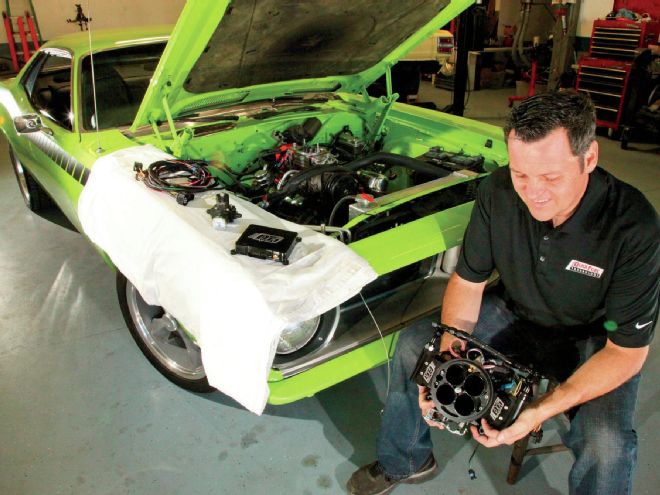
For decades, the long laundry list of complaints against EFI haven’t changed. It’s too complicated, too expensive, too difficult to install, and too ugly. Fair enough, but have you checked out the newest options lately? In recent years, aftermarket EFI systems have entered a Renaissance, and are now just as idiot-proof as a carb. Better yet, by emulating the look and feel of a four-barrel carburetor, installing one is as easy as yanking off that old carb, and bolting a new EFI throttle body in its place. Perhaps the most substantial perk these new systems have to offer is their self-tuning capability. Even carbs can’t do that. So if you’re competent enough to order up a greasy pizza with a smartphone app, you’re competent enough to tune EFI. It all sounds too good to be true, but after installing Quick Fuel Technology’s new QFI system in a single afternoon on a ’72 ’Cuda, we’re believers.
…if you’re competent enough to order up a greasy pizza with a smartphone app, you’re competent enough to tune EFI.
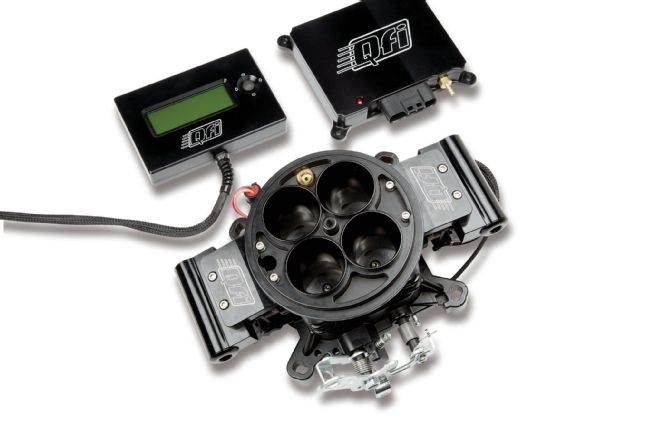
The QFI system is available in two different configurations. The Base Kit (PN QFT500BD) lists for $1,999, and includes the throttle-body assembly, ECU, handheld controller, wiring harness, and a wideband oxygen sensor. The Master Kit (PN QFT-500BDM) checks in at $2,149, and adds a fuel pump, filter, pressure regulator, gauge, and fuel lines to the package.
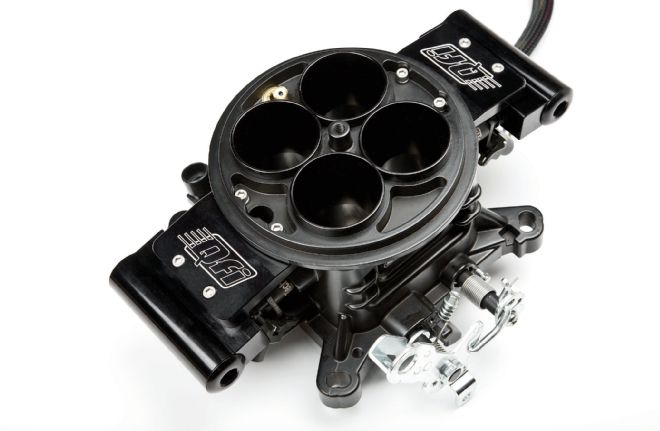
The QFI throttle body features four 66-lb/hr fuel injectors that can support up to 525 hp. Systems with larger injectors will soon be available for higher horsepower applications. The throttle body is offered in both a black diamond and a polished finish, and it can be adapted to fit a 4500-style intake flange by using an optional adapter (PN 300-4145-1A).
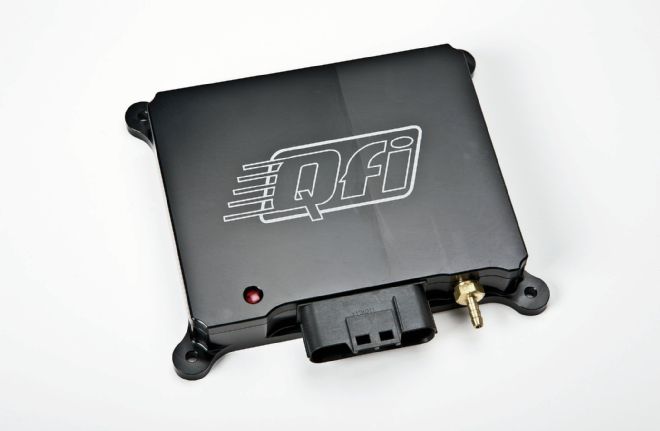
The brain of the operation is QFI’s blazingly fast ECU that’s covered in a slick billet housing. Unheard of just a few year ago, the ECU can maintain closed-loop operation under WOT to instantaneously adjust the air/fuel ratio. A truly unique feature of the QFI computer is that it can interface directly with both a ready-to-run distributor or an aftermarket ignition box to customize the timing map.
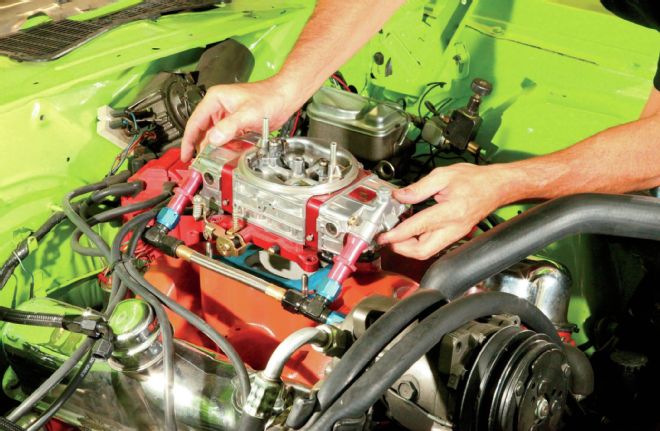
Our ’72 Cuda test subject is equipped with a numbers-matching 340 small-block. The mostly stock setup has been bored .030-inch over, and uses stock cylinder heads, a mild COMP Cams hydraulic roller, 10.0:1 compression, and a Weiand dual-plane intake manifold. It kicks out 360 hp on the engine dyno, and is very similar to what many street Mopars also have underhood. After disconnecting the battery, unhooking the throttle cable, removing the gas cap, and removing the fuel feed line from the fuel log, we pulled the QFT 650-cfm carb off the intake manifold.
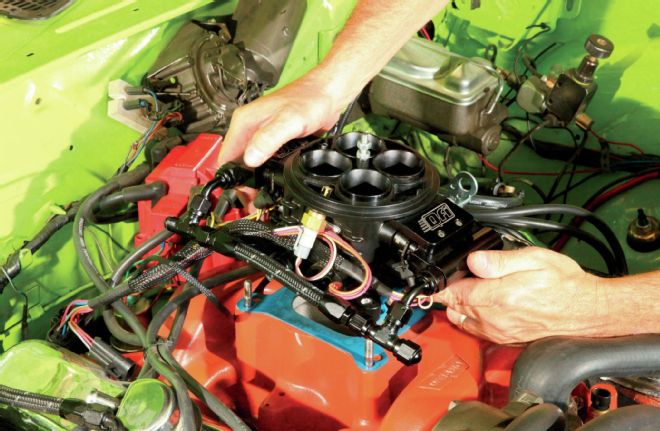
Since the injectors are integrated directly into the throttle-body assembly, there’s no need to monkey around with welding up injector bungs on the intake manifold. The QFI throttle body literally drops right onto the intake flange. From there, it’s simply a matter of bolting it down, and reconnecting the fuel line, throttle cable, and vacuum hoses.
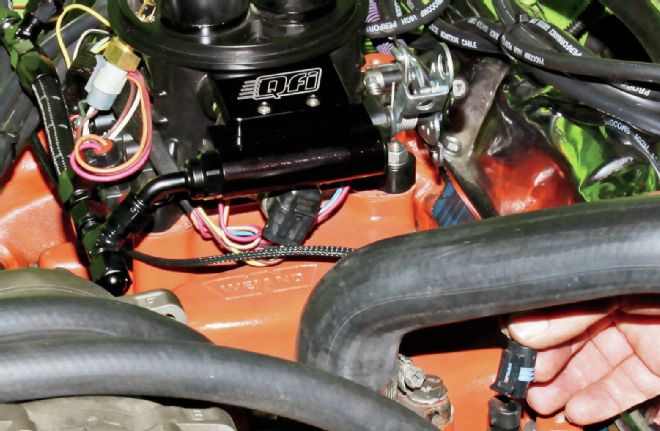
One of the many great perks of EFI is that it factors in coolant temperature when adjusting the fuel and ignition maps. That means there’s far less chance of melting a motor if coolant temps spike momentarily. The QFI system includes a 3/8-NPT coolant temp sensor that helps the ECU keep tabs on engine heat. After screwing the sensor into an empty intake manifold port near the thermostat housing, we plugged it into the green/back harness coming off the throttle body.
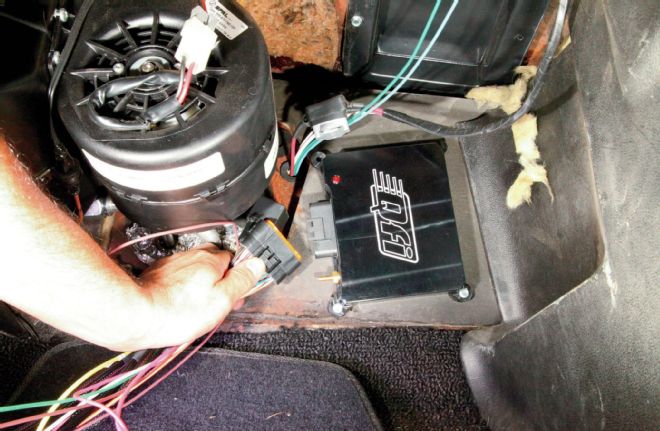
The QFI ECU is durable enough to be mounted underhood or inside the passenger compartment. For a cleaner appearance, we opted to mount it on the passenger-side footwell. The main wiring harness was routed through a grommet in the firewall. Next, we plugged the main wiring harness into the ECU before routing a piece of 3/8-inch vacuum line from the ECU unit to the throttle-body MAP sensor. Wiring it up couldn’t be any easier. Attach it to the hot and cold sides of the battery, connect it to a switched ignition source, and that’s it.
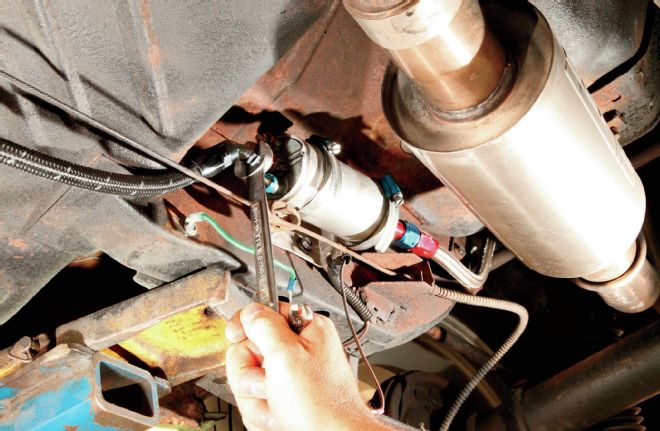
The wideband oxygen sensor should be installed 4 to 6 inches aft of the collector pipe, and at least 20 inches rearward of the cylinder heads. It can be positioned on either bank of cylinders, and should be angled 10 degrees above horizontal to prevent moisture buildup. After finding a suitable location and drilling a 5/8-inch hole, the sensor bung can be clamped or welded onto the pipe. We applied antiseize to the threads before screwing the sensor in, then plugged in the harness cable from the throttle body onto the oxygen sensor.
As one of the most reputable names in the carburetor business, Quick Fuel Technology knows a thing or two about building fuel atomizing devices. It just so happens that in its latest innovation, QFI uses four fuel injectors and a throttle body in lieu of a baseplate and boosters. The throttle-body injection arrangement makes for a far simpler and prettier install than a multi-point system, yet it still offers substantial improvements in driveability, cold-start performance, emissions, and fuel mileage. While it’s easy to dismiss some of those perks as irrelevant, chances are you don’t get to drive your hot rod as much as you’d like, which makes brisk cold starts very appealing. Likewise, the aroma of unburned hydrocarbons probably aren’t as pleasant as they once were in your youth, and enhanced fuel mileage will actually help offset the cost of investing in a new EFI system. The potential horsepower benefits of EFI over a carb can be debated for all eternity, but since EFI does not rely on a weak vacuum signal at low rpm to pull fuel through the boosters, the result is a big-time increase in low and midrange torque.
At the heart of the new QFI system is a billet four-barrel throttle body. The fuel injectors, rails, MAP sensor, and throttle-position sensor are all integrated into the throttle-body unit itself, making it a direct bolt-in replacement for a 4150-style carburetor. The kit also includes an ECU, wiring harness, and a handheld tuning controller. Upon installation, the ECU automatically creates a baseline fuel map using basic engine parameters (cubic inches, cam specs, target air/fuel ratio, and more) entered in through the handheld controller. Next, fire up the motor, and the ECU immediately begins fine-tuning the fuel curve based on feedback provided by the wideband oxygen sensor and MAP sensor. This is as easy as high tech gets. Now on with the install!
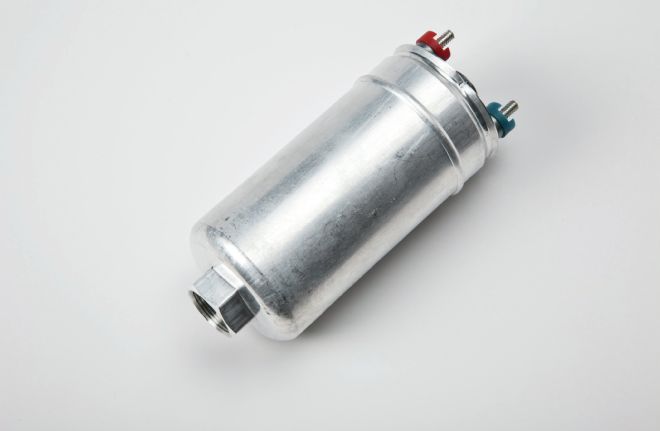
Since the fuel pressure in an EFI system is six to seven times greater than in a carbureted fuel system, the QFI kit includes a new high-pressure inline fuel pump and braided hose. The pump includes a 100-micron pre-filter integrated into inlet fitting. Wiring the pump is as easy as attaching the hot wire from the ECU to the pump, then attaching a ground from the pump to the chassis.

To ensure that the pump is gravity-fed properly, it must be mounted below the fuel tank outlet. We attached it to the passenger-side framerail. After screwing the supplied 3/8-inch barb fitting into the fuel tank outlet, we installed the necessary fittings onto a section of 3/8-inch hose and attached it to the pump inlet. The ’Cuda’s tank already had a vent tube, but cars that don’t have one will need a vent measuring at least 1/4 inch in diameter. If performing any type of modifications to the tank, it’s imperative to first drain it of all fuel and fumes.
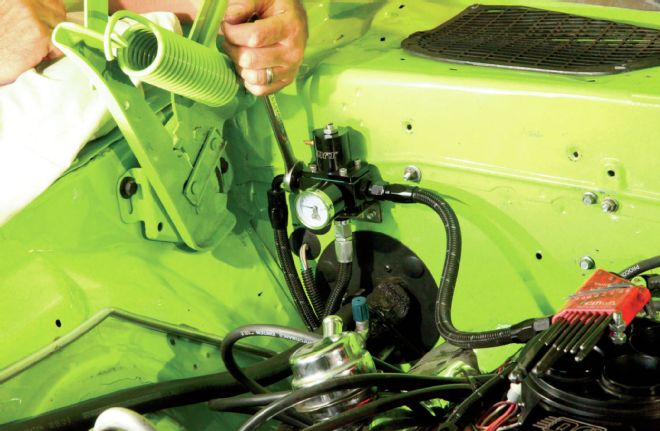
To finish up the plumbing, the fuel pressure regulator was mounted to the passenger side of the firewall. After cutting the supplied fuel line to the correct lengths, we attached the main feed line from the pump to the regulator inlet, and the engine supply line from the regulator outlet to the fuel log. Unlike a carbureted fuel system, most EFI systems use a return line. As such, we ran a 3/8-inch return line from the bottom of the regulator to the top of the fuel tank using a supplied barb fitting. For some cars, this may require installing a bung on top of the fuel tank.
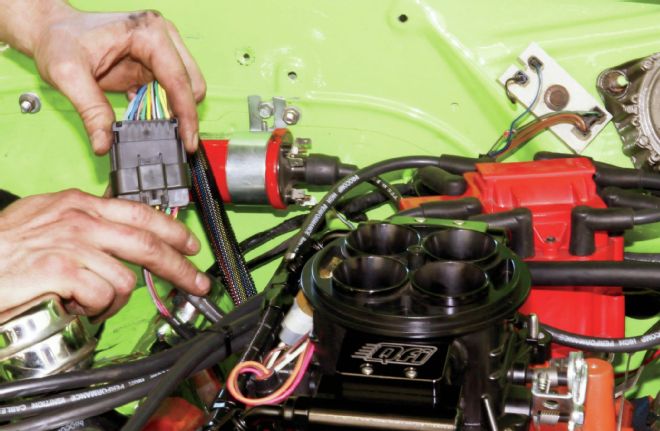
The final step in the parts installation process is connecting the main harness from the ECU to the throttle-body harness. The harness includes a number of optional inputs and outputs for the tachometer, cooling fan, coil/ignition, and fuel pressure gauge.
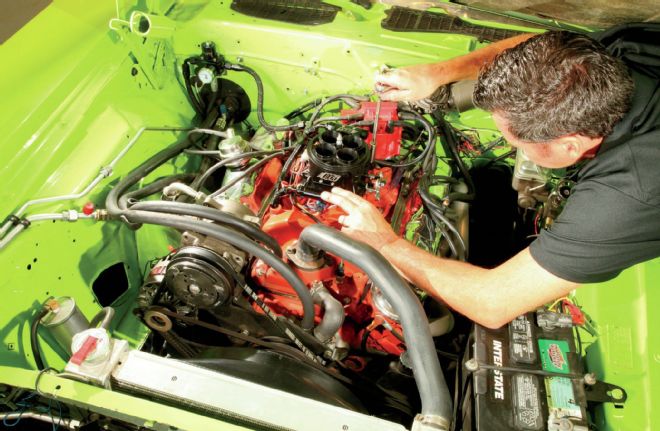
The finished product looks superclean and entirely at home on a numbers-matching, mostly original engine and chassis combo. Even your carburetor’s old air cleaner assembly should swap right over.
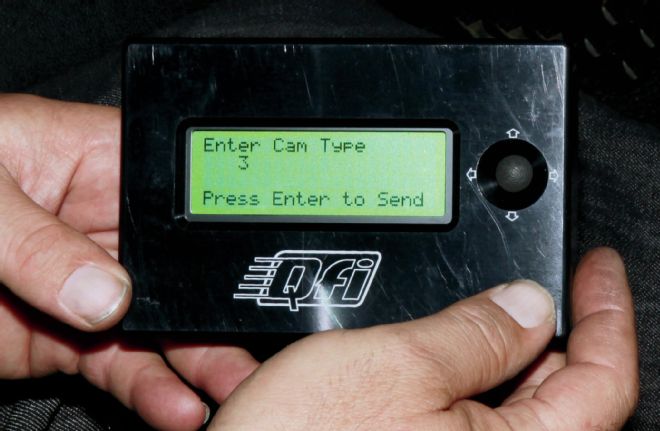
Perhaps the most miraculous aspect of the QFI system is how easy it is to establish a baseline tune. When turning the key to the “On” position for the first time after installation, the hand-held controller asks for some very basic engine parameters such as engine displacement, number of cylinders, timing advance, camshaft size, and rpm limit. Although they can be fine-tuned, the unit comes pre-programmed with optimum air/fuel ratios at idle, cruise, and WOT. With the key still in the “On” position, adjust the fuel pressure to 45 psi, then the motor is ready to fire up. An advanced setting menu allows using QFI as a fan controller, and adjusting fuel delivery during hot and cold cranking.
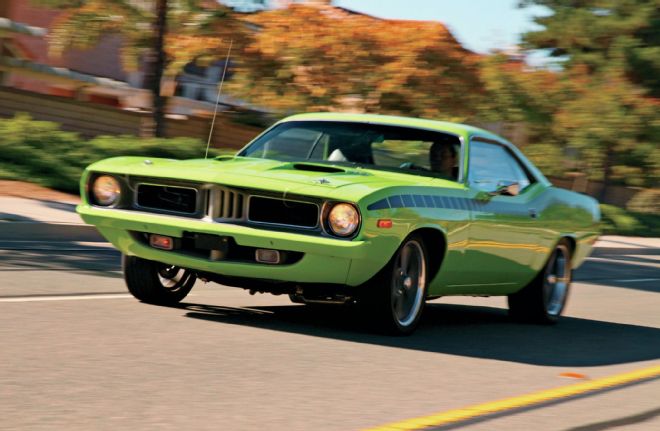
With the new QFI system installed, start-up time and idle quality were immediately improved. On the road, throttle-response was noticeably snappier as well. Immediately after firing up the QFI system for the first time, its adaptive learning feature continually adjusts the air/fuel mixture based on road conditions. If further fine-tuning is desired, the system can also be hooked up to a laptop and programmed using QFI’s Dashboard software.